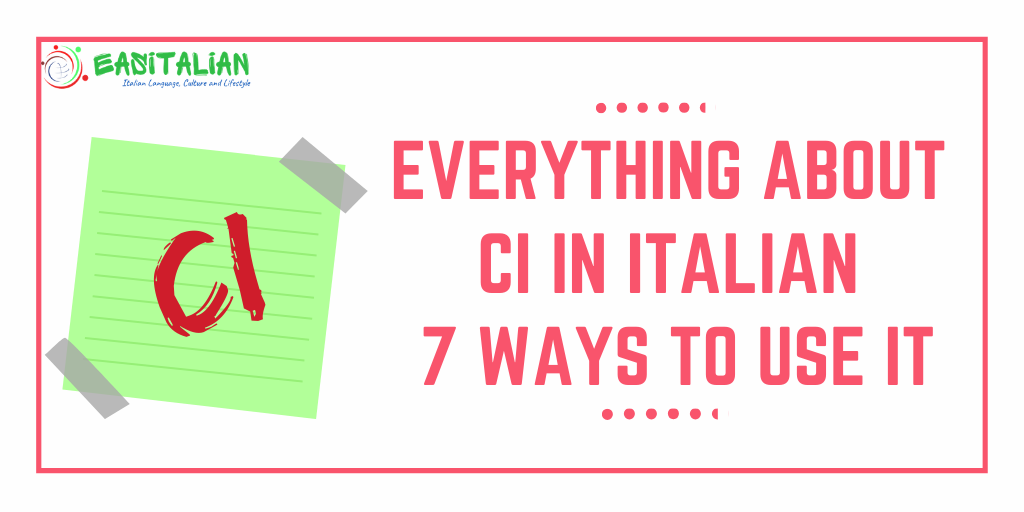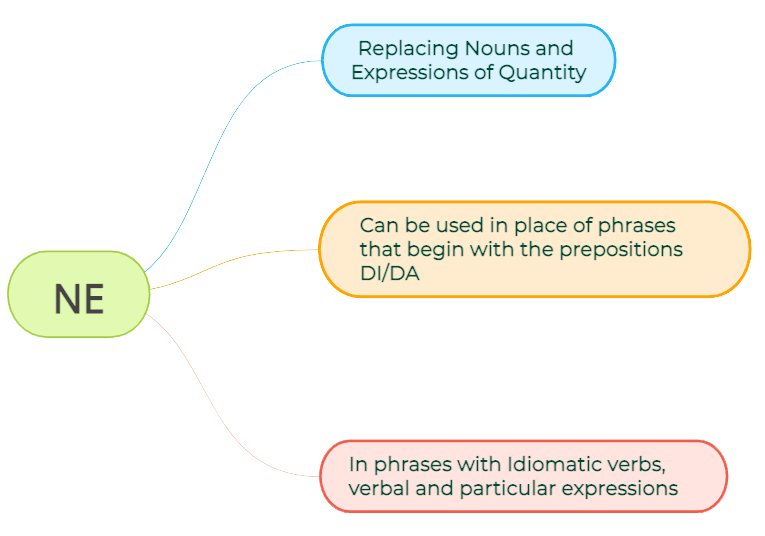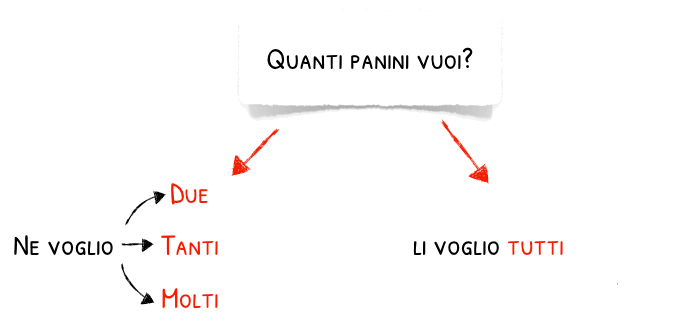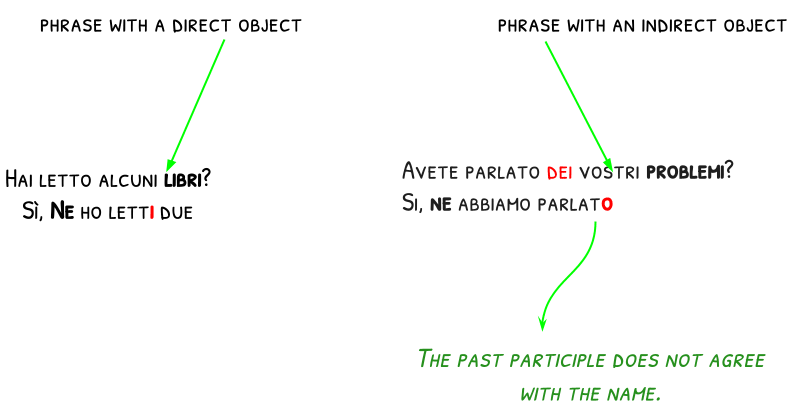This little word may seem simple, but its usage and versatility can be quite nuanced. “Ne” serves multiple purposes and can be used in various contexts.
Do you ever feel confused when using Italian words like NE and CI particularly when NE and CI are needed in a phrase?
The use of these particles in Italian is tricky to master but if you use them correctly, you’ll lift the standard of your Italian to a higher level.
Let’s explore everything about “NE” and how to use it effectively in Italian.

You may also be interested to know how to master the use of CI
Introduction to “Ne”
“Ne” is a pronoun that replaces nouns, expressions of quantity, and expressions that indicate an indefinite quantity, introduced by the preposition “di/da” (of, from) etc. It helps us avoid repetition and makes our speech more concise and fluent.
Look at these examples to see how NE is used.
- Mangi la carne? Sì ne mangio poca. (Do you eat meat? Yes I eat very little)
- Compri del pane? Si, ne compro un chilo. (Do you buy bread? Yes, I buy a kilo.)
- Quanti caffè hai bevuto? Ne ho bevuto uno (How many coffees did you drink? I drank one)
- Quante mele hai mangiato? Ne ho mangiate due (How many apples did you eat? I ate two)
- Parliamo spesso di politica. Ne parliamo spesso. (We often talk about politics. We talk about it often.)
- Ho bisogno di denaro. Ne ho bisogno. (I need money. I need it.)
NE is a very important small word and has several meanings:

Let’s take a look at each one.
1. Replacing Nouns and Expressions of Quantity
Ne” can replace nouns and expressions of quantity, allowing us to refer back to something mentioned earlier.
When you want to talk about a quantity, in that case, we call it “partitivo” because it refers to a “part” or quantity of something.
Examples:
Vuole del pane? (Would you like some bread?)
Si, ne vorrei un chilo 💡 NE= quantità di pane (yes, I would like one kilo – of it)
Oggi ho ricevuto molte telefonate: ne ho ricevute dieci. 💡 NE= quantità di telefonate (Today I have had a lot of phone calls I have had ten – of it)
Quante caramelle vuoi? Ne vorrei molte 💡 NE = quantità di caramelle (How many candies do you want? I would like many)
Ecco un po’ di acqua minerale. Quanta ne vuoi? Ne voglio un po’ 💡 NE= quantità di acqua (Here some mineral water. How much (of it) do you want? I want some – of it)
What kind of quantity replaces Ne?
Ne replaces a quantity indicated by:
- a number
- a weight
- a length
- a pronoun of quantity like molto, poco, troppo, alcuni, qualcuno …

⇒ Don’t use Ne with tutto tutta tutti tutte but use the direct pronouns lo – la – li – le instead.
Example:
Quanti panini vuoi? Li voglio tutti (How many sandwiches do you want? I want them all)


Would you like to find out why?
When replacing due, tanti, molti, “ne” indicates a portion of the amount, but when replacing tutti, “ne” indicates the full amount.
For this, you don’t need to use ne, which expresses just a portion of a quantity instead.
2. Replacing nouns and phrases introduced by the prepositions DI – DA
Sometimes ne might take the place of a word or phrase that was introduced by the prepositions of or from.
In this case “ne” means
di/da questo/a (of/from this)
di/da lui,lei – loro (of/from him, them)
da questo luogo (from this place)
Example. ne + di:
Hai bisogno di una matita? Sì, ne ho bisogno. 💡 NE = della (di+la) matita – DI QUESTA – (Do you need a pencil? Yes, I need it)
Cosa sai della situazione italiana? Non ne so niente 💡 NE = della (di+la) situazione (What do you know about the Italian situation? I don’t know anything – about it
Maria è partita l’anno scorso e non ne ho avuto più notizie 💡 NE = di Maria – DI LEI – (Maria left last year and I have not had any news – of her)
Examples ne + da:
Vieni da Roma? Sì, ne torno adesso. 💡 NE = da Roma – DA QUESTO LUOGO –(Are you coming from Rome? Yes, I am returning now – from Rome).
Ho letto il libro e ne sono rimasto impressionato 💡 NE = dal libro – DA QUESTO LIBRO – (I read the book and I was impressed – by it)
What happened if you want to use ne in the past?
When “ne” is used with the passato prossimo, the past participle agrees with the noun replaced by ne only when this noun is a direct object.
Example:
Quanti annunci hai letto? (How many ads have you read?) 💡 direct object
Ne ho letti (the past participle agrees with the noun) molti. (I have read many – of them).
–> BUT: Avete parlato dei vostri problemi? Si, ne abbiamo parlato (Did you talk about your problems? Yes, we talked about it.)
The past participle does not agree with the name WHEN THERE ISN’T A DIRECT OBJECT.

Placement of Ne in a sentence
Ne behaves like any other weak pronoun.
It is placed before the verb in affirmative sentences and between the particle non and the verb in negative clauses.
It can be attached to the infinitive, the gerund, and the imperative.
Examples:
- Affarmative – Hai letto il libro della Ferrante? Sì, ne ho letti due.
- Negative – Conosci qualche cantante italiano? No, non ne conosco nessuno.
- Attached – Conosci il cantante italiano Tiziano Ferro? Si, ho sentito parlarne.
3. Using NE with Idiomatic verbs, verbal and particular expressions
Some verbs are bound to “ne” to form a different meaning, particular sometimes colloquial.
The most common are:
Idiomatic verbs
• andarsene (andare + ne)
🔸 me ne vado –(I’m going away)
🔸 vattene! – (go away!)
🔸 andiamocene –(let’s go)
• poterne (potere + ne)
🔸 non ne posso più (I can’t bear it any more)
• importarsene (importare + ne)
🔸 non me ne importa niente (I don’t care at all)
• fregarsene (fregare + ne)
🔸 chi se ne frega (who cares?) – colloquial –
🔸 non me ne frega niente (I don’t care at all) – colloquial –
Expressions
“Ne” appears in many common Italian phrases.
• valerne la pena (be worth) – (VALERE + NE)
Valeva la pena di studiare la lingua italiana? Sì, ne valeva la pena (ne in locuzioni fisse).
• Averne fin sopra i capelli (to be fed up to the teeth) – (AVERE + NE)
Ne ho fin sopra i capelli di questo lavoro ( non ne posso più)
• Farne di tutti i colori (be up to all sorts of things) – (FARE + NE)
Combinare dei pasticci; creare dei piccoli guai (come fanno i bambini).
Oggi i bambini ne hanno fatte di tutti i colori e hanno rotto anche un vaso!
• che ne dici? (what do you say – about it-)
Che ne dici di andare al mare oggi? (How about going to the beach today?)
• non poterne più (can’t take it anymore)
Non ne posso più. (I can’t take it anymore.)
Here are some more examples:
Ce ne sono tanti. (There are many of them.)
Ne sono sicuro/a. (I am sure of it.)
Practice is key to mastering the usage of “ne.” Pay attention to its various contexts, engage in conversations, and incorporate it into your written exercises.
With time and consistent effort, you will become more comfortable using “ne” and unlock its full potential in expressing yourself accurately in Italian.
So, embrace the power of “ne” in your Italian language journey and enjoy the fluidity it brings to your expressions.








Regan
Everyone lloves it whenever people get together and shhare views.
Great blog, keep itt up!